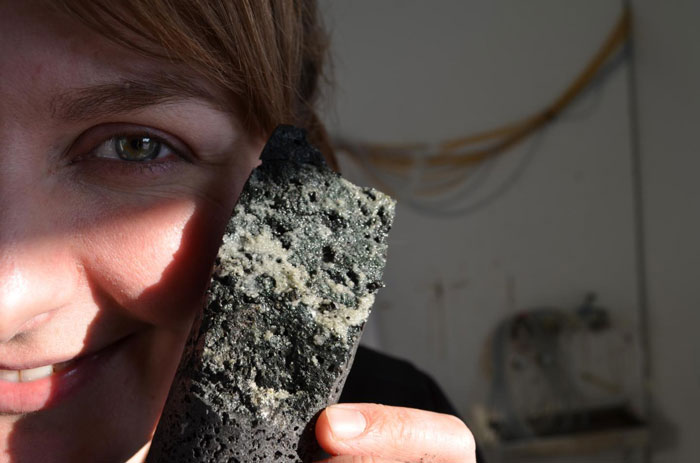Scientists are turning CO2 into solid rock 50x faster than previously possible
Scientists have made a bit of leap in carbon-capture technology. A process, originally estimated to take between 8-12 years, has been honed into a matter of months, in which carbon dioxide is grabbed out of the air and turned into rock.
The entire process is quite interesting. An international team of scientists in Iceland have begun pumping carbon dioxide into the underground, volcanic basalt, where it mixes with hydrogen sulphide and water. The transformation happens quickly and cheaply.
"This means that we can pump down large amounts of CO2 and store it in a very safe way over a very short period of time," said hydrologist Martin Stute from Columbia University.

Kevin Krajick/Lamont-Doherty Earth Observatory
When basalt is exposed to CO2 and water, it turns into a chalky white solid, but no one could have estimated that it would happen so quickly.
"Our results show that between 95 and 98 percent of the injected CO2 was mineralised over the period of less than two years, which is amazingly fast," said geoengineer and lead researcher Juerg Matter from the University of Southampton in the UK.
It is hugely exciting, also, because the earth provides free storage. "Carbonate minerals do not leak out of the ground, thus our newly developed method results in permanent and environmentally friendly storage of CO2 emissions," said Matter. "On the other hand, basalt is one of the most common rock types on Earth, potentially providing one of the largest [means of] CO2 storage capacity."
Matter continues to explain the value of scaling up the operation. "The overall scale of our study was relatively small. So, the obvious next step for CarbFix is to upscale CO2 storage in basalt," said Matter. "This is currently happening at Reykjavik Energy's Hellisheidi geothermal power plant, where up to 5,000 tonnes of CO2 per year are captured and stored in a basaltic reservoir."
The carbon can be re-engineered as fuel for vehicles or food for plants. Awesome in so many ways.